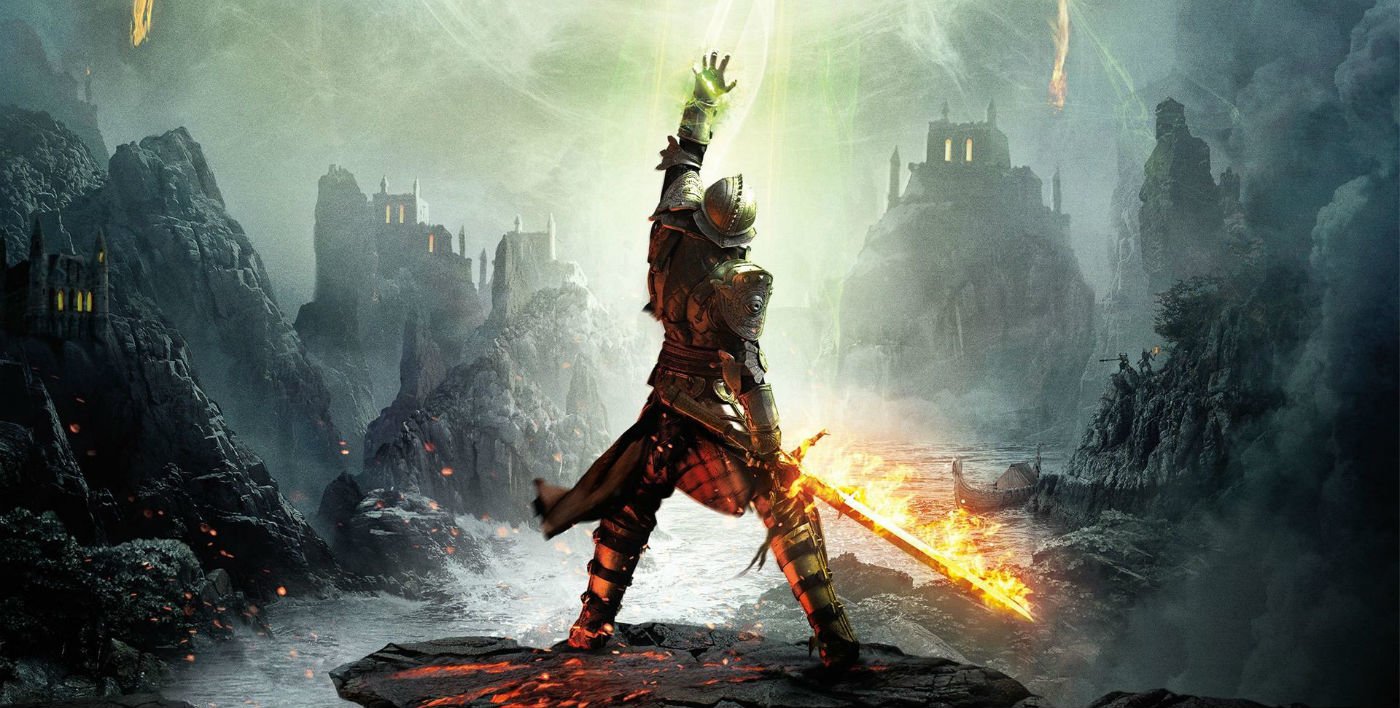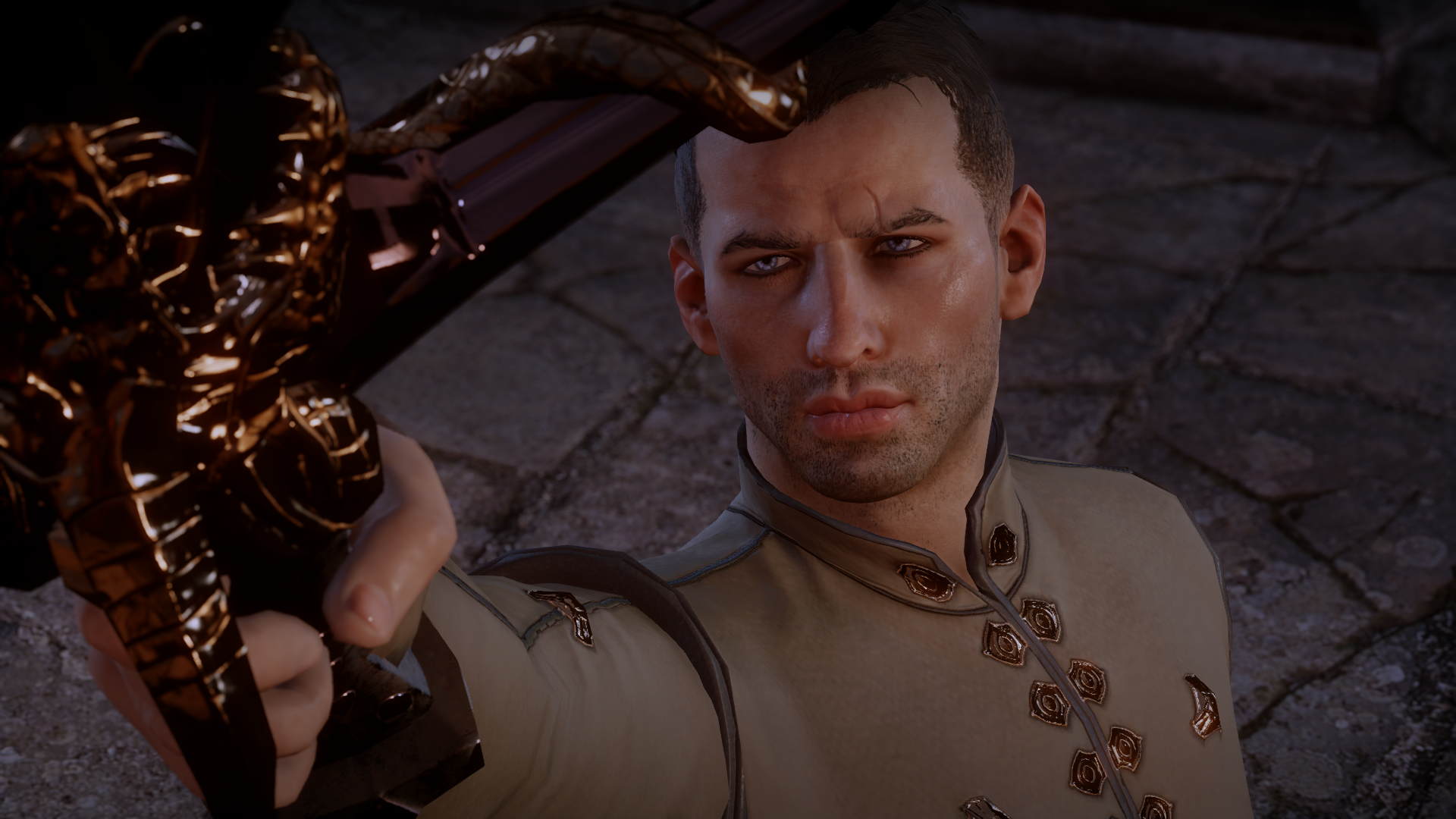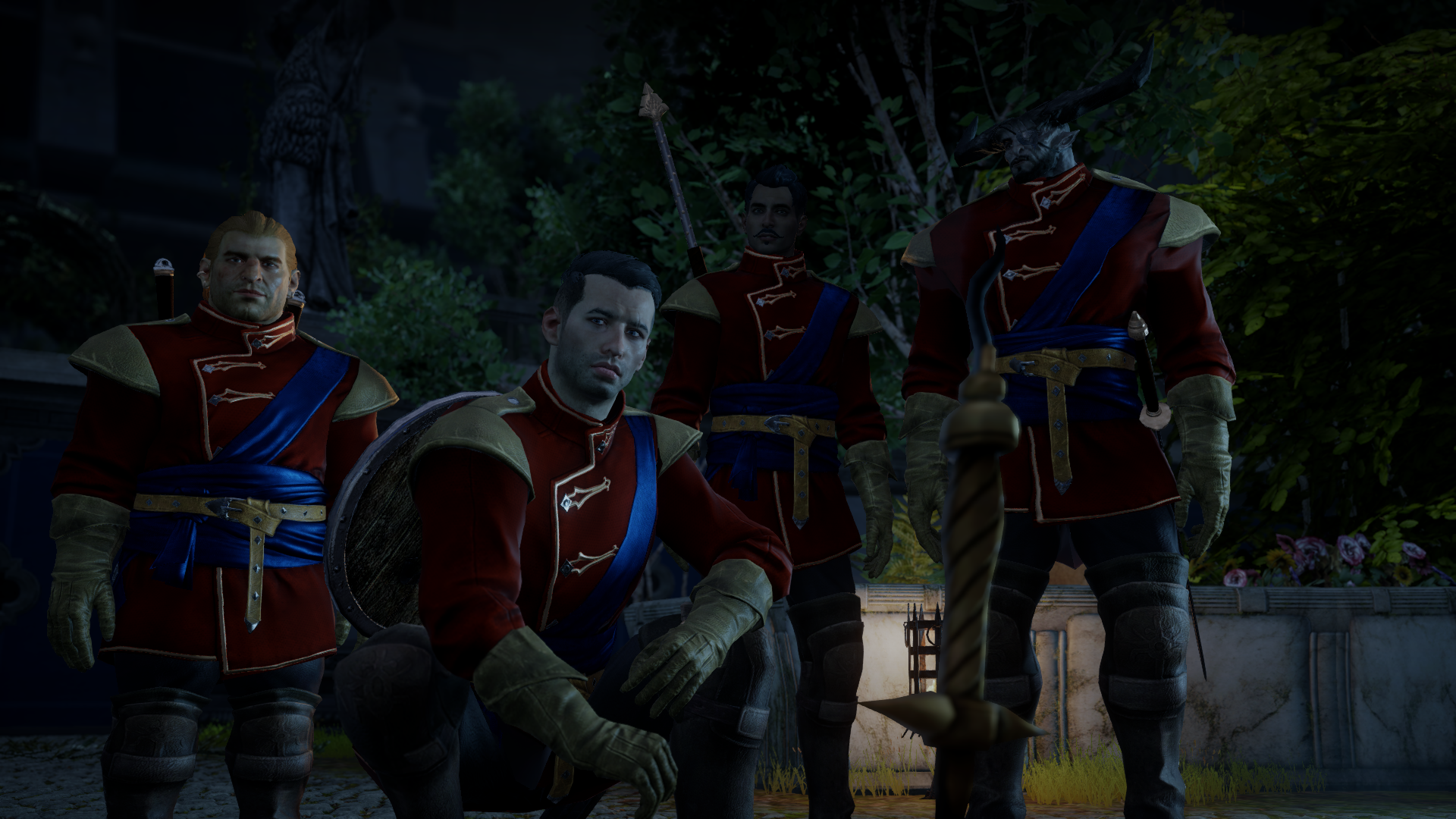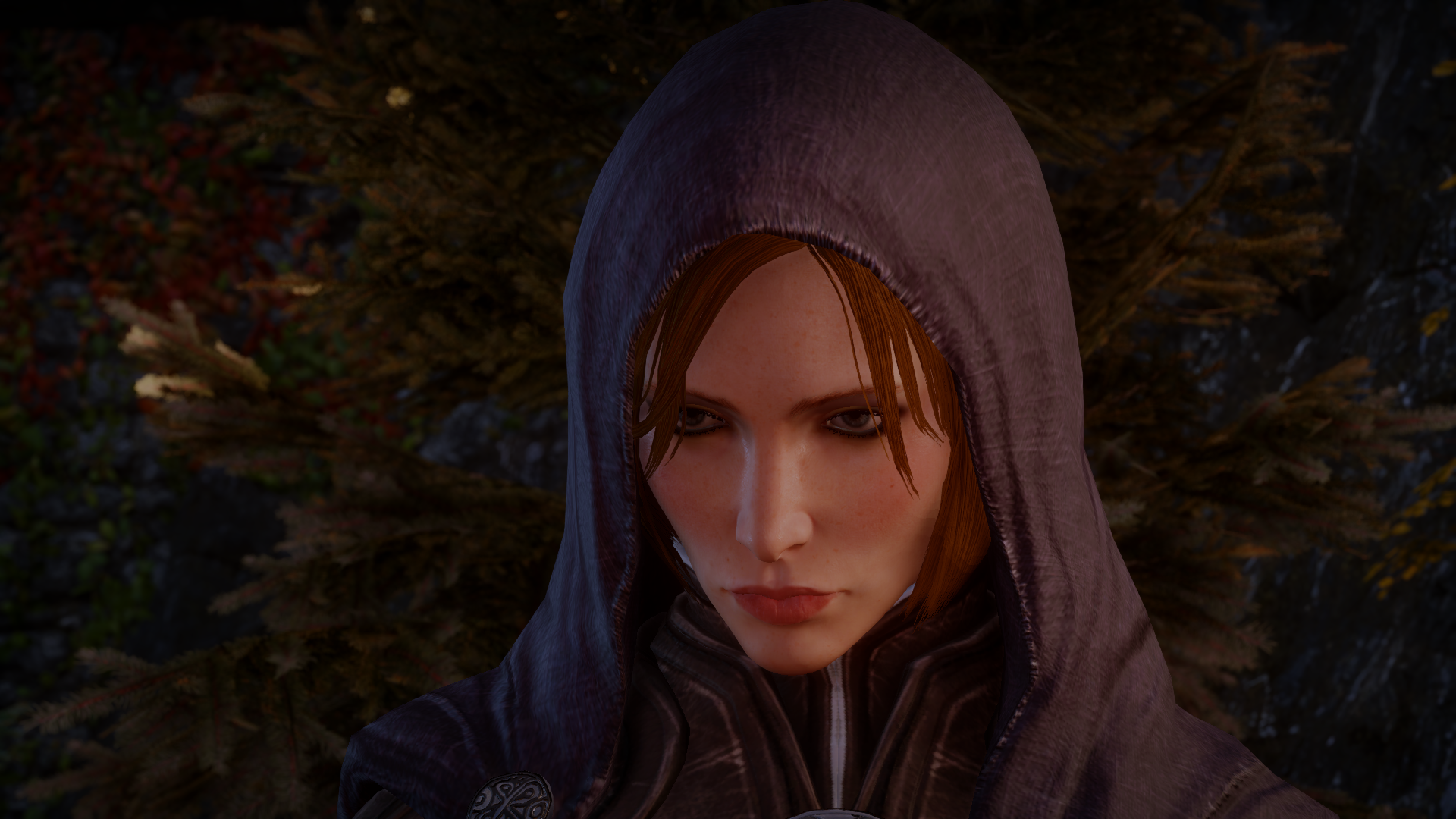Few games have attempted scale like Dragon Age: Inquisition. With the exponentially rising costs of game development and the ubiquity of shortened singleplayer experiences, this statement rings even more true. Inquisition is certainly Bioware’s largest game to date, and while the content is not always up to snuff and the game’s incredible length can lead to fatigue, I enjoyed the vast majority of my 70 hours spent in Thedas. A wise update to the systems of previous Bioware efforts and a successful recovery from the fan-bemoaned Dragon Age II, Dragon Age: Inquisition is a clear labor of love and the most enjoyable entry in the Dragon Age franchise thus far.
To fully appreciate the systems of Inquisition, it is important to have a basic knowledge of the previous games in the franchise. Dragon Age: Origins emerged as a dark horse in 2009, an unlikely and faithful throwback to Bioware’s days as a cRPG developer creating titles like Baldur’s Gate and Neverwinter Nights. Universally critically acclaimed and creating a huge fanbase, it revitalized the cRPG genre and paved the success for games like Wasteland 2 and the kickstarter blowout Torment: Tides of Numenera. The (optionally) isometric and tactics-focused combat provided a deep network of playstyles and struck a stark juxtaposition with Bioware’s runaway success of the more action-oriented Mass Effect. Equally important was the deep fantasy world it created in the lands of Ferelden, mostly avoiding generic fantasy tropes and creating a sturdy framework of politics and meaningful character interaction for its successors to build upon.
Drawing heavy inspiration from the streamlined (to its benefit) Mass Effect 2, 2011’s Dragon Age II was received positively by critics but suffered immense backlash from its fanbase. Egregious reuse of template areas, a much smaller-scale story, and the removal of the deep customization focus of the first entry resulted in a neutered experience. In the face of this backlash, Bioware responded wisely by surveying fans and asking what they really desired and expected from a game in the Dragon Age franchise. From the outset, it looked as though Inquisition would be a return to form and a love letter to fans of the series. Inquisition succeeds in its revitalization of the franchise, and then some.
Picking up shortly after the major event at the end of Dragon Age II, Inquisition opens with a literal bang as you are placed in the unfortunate center of a terrorist attack on the templar-guarded Temple of Sacred Ashes. Branded with a mysterious mark on your hand, you must absolve yourself of suspicion by conscription into the Inquisition, an ancient organization dedicated to maintaining order within Thedas. Along with some familiar faces, you must set out to close the giant rift that has opened in the sky and try to quell the civil war that rages in the land between the Templars and Mages.
Though Inquisition will heavily reward series veterans with the return of meaningful characters and the visualization of choices made in previous games, it is surprisingly accessible to newcomers. The plot of the previous games is summarized through exposition without the dialogue seeming too clumsy, and the character interaction is meaningful enough that fresh faces will soon be able to confidently navigate the web of intrigue and political strife that consumes much of Inquisition’s storyline. For loyal fans, past decisions imported through the Dragon Age Keep tool are handled with admirable respect and care, with measurable consequences for actions made in previous games.
The influence of Bioware’s previous effort is visible within Inquisition’s construction, largely to its benefit. Much like Mass Effect 3, you must build an army to combat the ancient evil which you now face. Thankfully, there are no clumsy mobile or online hooks in this rallying of forces, and the act of upgrading your keep and preparing your war effort is immensely satisfying. The primary plot thread of saving the world is generally entertaining, yet, much like Bioware’s previous efforts, the writing shines in more subtle moments. The political intrigue of Dragon Age II has returned largely intact. Over the course of your journey, you will travel to Orlais and Thedas and rally support from major political figures. These interactions and political machinations provide for surprisingly fun and tradition-bucking mission design, navigating dialogue-wheel driven conversations in which the “paragon” option is not always the wisest political move. Even outside of these more dialogue-based missions, the general design of the main missions is generally outstanding, with each mission providing fun and unexpected set-piece moments which stand out as particularly memorable. Whether it be time magic, blood magic, or finding out what has happened to the Grey Wardens, the primary missions are consistently entertaining and demonstrate vast flexibility in their Bioware’s development capabilities.
Access to these main missions is gated by your “Power” rating, a depletable resource which is gained by interacting in the game’s myriad side content. While the main missions serve as dynamic and hand-crafted set-pieces, this side content doesn’t always hit the mark. Many of these missions boil down to “go to X place, kill X things, and bring back X loot.” This simplified MMO style design is largely due to the scope of the game. There’s a lot of this side-content – in my 70 hour save, I didn’t get anywhere near hundred percent-ing the game. Fortunately, the core gameplay loop is so enjoyable, I found the simple act of completing these very basic missions to still be fun.
Inquisition is largely a stark departure from the tactics-based combat of the previous games. Whereas Origins had a labyrinthine technical tactics screen that read like a series of mathematical algorithms and functions, the extent of party tactics in Inquisition mostly boils down to telling your party when to drink a potion. Fortunately, the AI is mostly good, and outside of a few of the game’s hardest optional boss battles, I didn’t really run into any problems or feel like I needed a greater degree of control. For those playing on a higher difficulty than normal or for those who yearn for the isometric view of yore, a “tactical” isometric view is available at the press of a button. This view pauses the game and allows you to individually control each member of your party, controlling the flow of time as necessary to execute more complex series of commands.
Thanks to the satisfying revamp of basic combat, however, I hardly ever interacted with this view. By default, you are placed in a behind-the-back third person view and can switch to any party member at any time. The basic combat feels extremely visceral and satisfying, and the different classes all exhibit great variation. Each class can equip up to eight active skills at a single time, which is a strange limitation for a mouse and keyboard, but makes sense considering the console-focused balancing of the game. Each class has several different upgrade paths and specializations, resulting in a series of systems that lead to a great degree of customization. I found a dual-blade rogue to be by far the most satisfying class to play, and never got tired of zipping around the battlefield and backstabbing enemies from my cloaked stealth mode. With the amount of hours that I spent engaging in combat, that’s a pretty remarkable feat. Thanks to the ability to switch to your different party members and therefore different classes at will, gameplay fatigue is wisely combated.
You’ll have several different party members to choose from in each class, with nine total heroes and antiheroes joining you in your fight to close the rifts. In true Bioware fashion, the writing really shines in the interactions with these characters and the loyalty missions that you’ll go on to keep them fighting by your side. Inquisition served up some of the most memorable characters that I’ve ever engaged with in a Bioware game, with souls like Iron Bull and Dorian ranking right up there with Garrus and Mordin from Mass Effect. There is an alarming amount of recorded voiceover for each character, leading to a deep connection being formed with each individual party member.
Bioware seems to generally be in top form with its writing when it comes to the game’s various personalities. While strong and widely varied, these personalities manage to never come off as charicatures, a criticism that could be leveled against previous efforts. The game’s handling of varying sexuality, romance scenes, and Bioware’s first transsexual character in particular show a maturation of the company and a respectful tribute to diversity.
In addition to the vast amount of singleplayer content, Inquisition also boasts a cooperative mode which allows you to team up with friends and raid dungeons of AI-controlled baddies online. While functional, the divorce from the singleplayer experience lead to the co-op feeling rather lackluster and somewhat of an afterthought. I would have enjoyed the mode had there been more significant story tie-in, but as it stands, I didn’t find it to be nearly as satisfactory as the surprisingly addictive online multiplayer portion of Mass Effect 3.
Inquisition did not manage to escape the plague of technical problems that have infected 2014’s major releases. I reviewed the game on the PC version and encountered numerous bugs that ranged from annoying to game-breaking. A well-documented bug on the PC version caused the player character’s chosen voice to change halfway into the game. I encountered numerous crashes to desktop, citing a graphical “hang-up” despite the fact that I was running the game on a properly cooled GTX 980 running the most recent drivers available from Nvidia.
Despite these technical issues, the game ran mostly fine on the PC, and stands out as the superior version of the game should you own a mid to high-range computer. Regrettably, the mouse and keyboard controls are not up to snuff with previous releases, leaving a gamepad the superior way to control the game. Nevertheless, with the settings up to max, the game looks gorgeous, with the art style foregoing the bemoaned “cartoonish” look of DAII and returning to the more realistic art style of Origins. Additionally, there is a huge range of biomes to be explored – deserts, snowy mountain peaks, and rainy swamps are all rendered in glorious detail. I was able to run the game at 1440p and max graphical settings and only experience occasional (and seemingly random) slowdown that quickly dissipated.
Bioware’s games have very much felt as though they have been built off of a template since the first Mass Effect game, and have run the risk of becoming stale. However, Inquisition manages to revitalize and perfect the formula in ways that leaves Inquisition feeling like the game that Bioware has always wanted to make. Bioware has said that Inquisition can be viewed as a template for forthcoming efforts (including the next Mass Effect game), and for the moment, that seems to be a positive thing. While its scope sometimes works against it, Inquisition was nonetheless able to provide me with the most enjoyable gameplay, both in quantity and quality, that I experienced this year. A successful reboot of the franchise and a faith-restoring effort in Bioware following the Mass Effect 3 debacle, Inquisition is one of the studio’s (and the year’s) best games that can be recommended without caveat.
This review is based on a retail PC copy of Dragon Age: Inquisition developed by BioWare and published by Electronic Arts.
- Vast amount of content
- Great writing and character interaction
- Return to form for Dragon Age
- Technical issues on all consoles
- Side content is repetitive and basic
- Middling PC port




